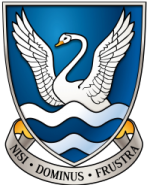Year 14 Physics pupils attend QUB Lecture “Power the Future: The Physics of Fusion”
On Wednesday 13 February, Year 14 Physics students attended “Power the Future: The Physics of Fusion” lecture by Dr Melanie Windridge at Queen’s University.
The lecture concentrated on the importance of fusion with our ever-growing population, technology and energy demands. As our fossil fuels are running out, so are our energy sources, and we are rushed to find a solution.
The lecturer explained that fusion is a reaction in which two nuclei collide at very high speeds and join to form a larger atomic nucleus and this joining releases energy. For example, the energy emitted by the Sun (which is more than imaginable) into space is produced by nuclear reactions that happen in its core. Here the collision of hydrogen nuclei results in the formation of helium. This in-turn produces a lot of energy.
Dr Windridge illustrated the importance of fusion: it takes 1000 windmills to produce the energy of one powerstation, but if we are successful 1kg of fusion will equal 10 million fossil fuelled power stations. This is why scinetists are trying to make fusion occur on Earth. It is vital for our future to be able to find a new source of energy as even renewable energy will not be able to supply the needs of the increasing population.
And you may ask why not fusion then? Dr Windridge discussed the obstacles to fusion that physics research is currently trying to overcome. To produce more thermal energy than the energy they put in, to maintain the plasma in a “steady state” and to develop the technology and processes needed for a fusion power plant.
Large scale researcher projects are ongoing, such as JET (fusion reactor) in England and ETA is currently being built in Europe and will be the largest experimental tokamak nuclear fusion reactor. These projects could provide a breakthrough that changes the world and we are hopefully the generation to witness the successes and rewards if Physicists achieve their goals. The lecture definitely opened my eyes to the present research and to what the future might hold.
Ciara Tang
Year 14






